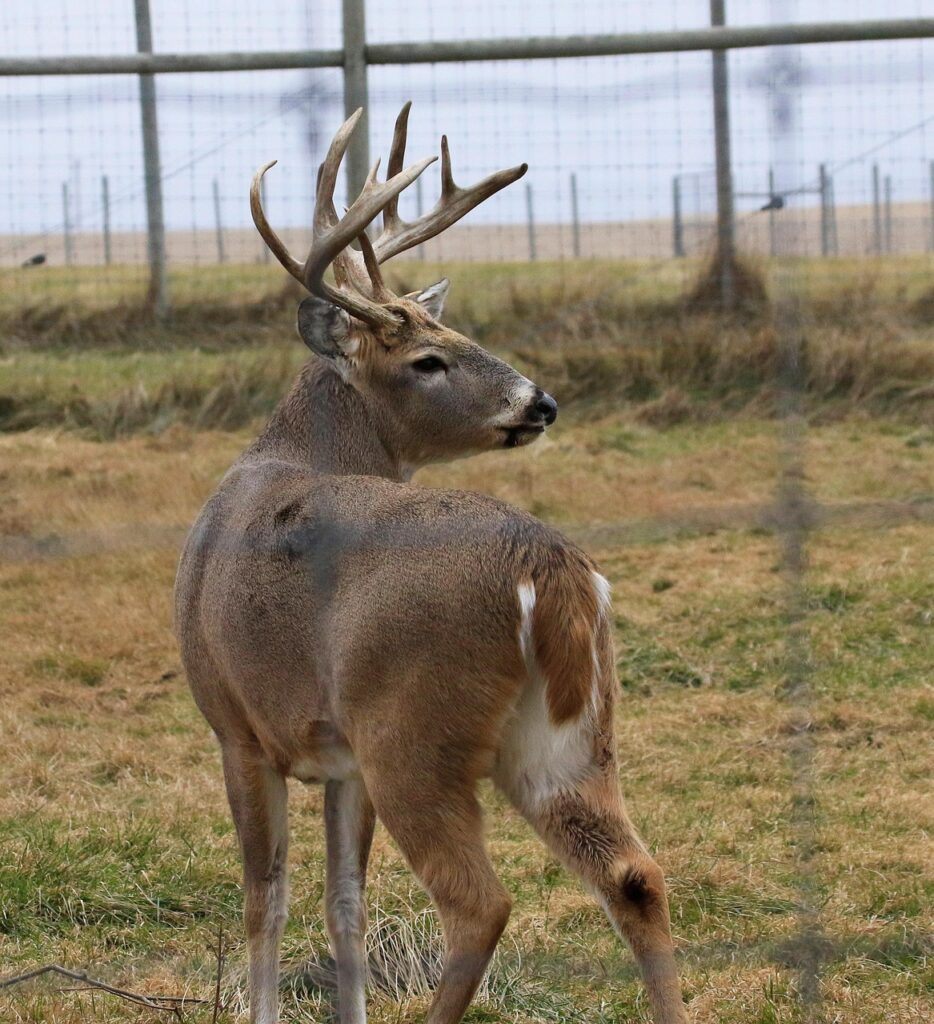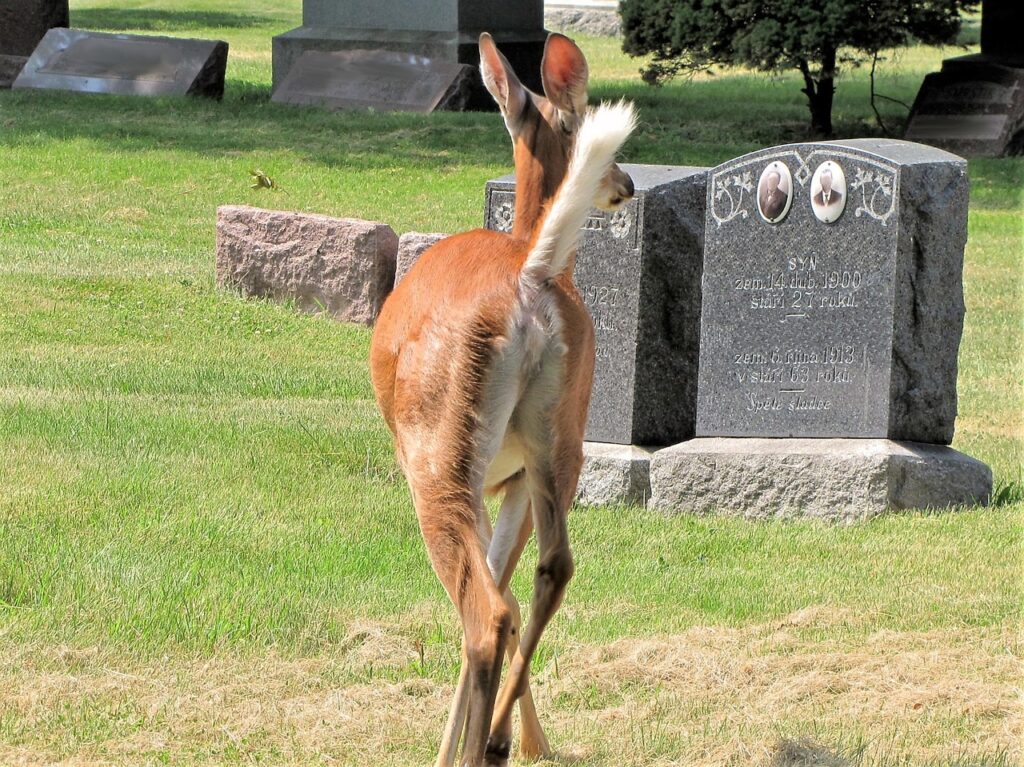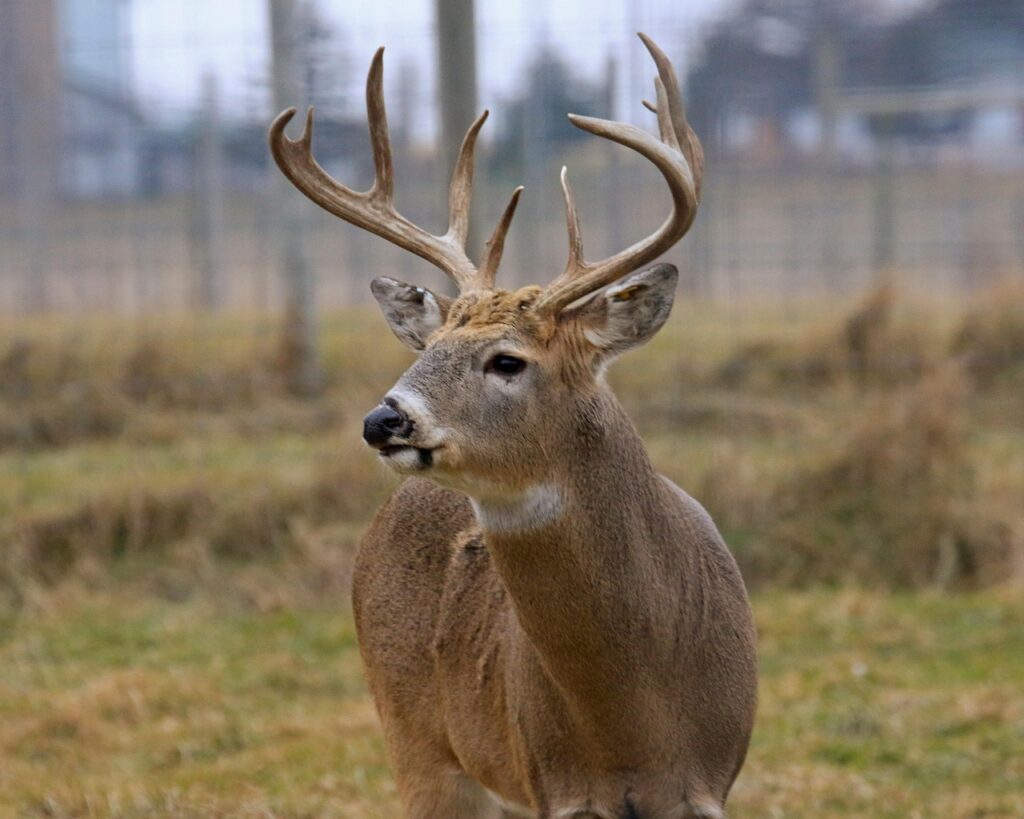White-tailed deer



Characteristics:
The white-tailed deer is a medium-sized deer with a slender body and long legs. It measures 150–200 cm in length and stands about 90–110 cm high at the shoulder. Its coat is reddish-brown in summer and grayish-brown in winter. The most distinctive feature is its long, white tail, which it raises as a warning signal when alarmed. The male (buck) has antlers with several points that are shed each winter and regrown in spring. The female (doe) is smaller and lacks antlers.
Distribution:
The white-tailed deer originates from North America but has been introduced to Finland, from where it has spread into parts of northern Sweden. It prefers mixed forests, farmland, and wooded areas that offer both cover and abundant food.
Diet:
White-tailed deer are herbivores that feed on grasses, herbs, leaves, shoots, bark, acorns, and various agricultural crops. In winter, they mainly eat twigs and buds.
Young:
The doe usually gives birth to one or two fawns in May–June. The fawns are light brown with white spots, which fade later in the summer.
Rut:
The rutting season occurs in the summer. During this time, bucks fight using their antlers and mark their territory with scent glands and scrapes on the ground.
Calls:
White-tailed deer make short, sharp snorts when alarmed. During the rut, bucks may grunt or snort as part of their mating behavior.
Tracks:
Their hoofprints are pointed and relatively narrow, about 6–8 cm long — similar to those of a roe deer but larger. Droppings consist of small, dark pellets, often found in piles.
Hunting:
White-tailed deer are hunted in autumn, mainly through stalking, stand hunting, or driven hunts. They are most active at dawn and dusk and are very alert and fast-moving animals.
Weapon Class:
Hunting white-tailed deer requires a Class 1 rifle, meaning ammunition with at least 2,700 joules of energy at 100 meters.
